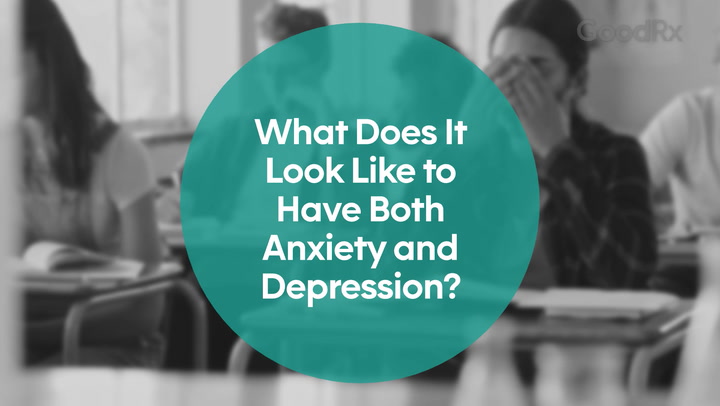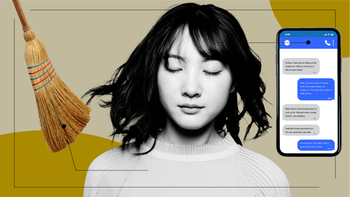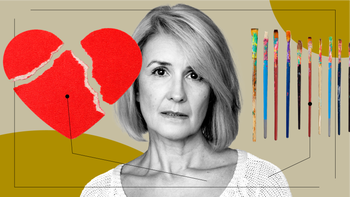
Ativan vs. Xanax: Differences, Similarities, Side Effects, and More
Key takeaways:
Ativan (lorazepam) and Xanax (alprazolam) are benzodiazepine medications that treat different types of anxiety, including generalized anxiety disorder (GAD) or panic disorder (PD).
The recommended dosages of Ativan and Xanax vary depending on the situation. It’s normal to take one pill as needed a few times throughout the day. Your medical professional will usually start off by prescribing a low dose and slowly increasing it as needed.
Ativan and Xanax are both controlled substances that can have serious risks, so they generally shouldn’t be taken long term. Your prescriber may alter your dosage to help minimize side effects.
Table of contents

Intense worrying, a racing heartbeat, and trouble concentrating can be day-altering anxiety symptoms. Many people experience them, and making them more manageable is a common priority. And while anxiety medications are far from the only answer, they’re helpful treatments when needed.
When used as directed, benzodiazepines, such as Ativan (lorazepam) and Xanax (alprazolam), are effective for treating anxiety. But there’s a time and place for benzodiazepines to be used. Many people turn to them for short-term anxiety relief. In other cases, they’re prescribed alongside other anxiety medications, such as selective serotonin reuptake inhibitors (SSRIs) or serotonin and norepinephrine reuptake inhibitors (SNRIs), that haven’t worked well to control anxiety symptoms on their own.
If you’re considering taking Ativan versus Xanax, there are a few differences to consider before picking which might be right for you.
VIDEO: Understanding treatment for generalized anxiety disorders
Top similarities between Ativan and Xanax
Ativan and Xanax have a lot in common. Check out these summarized similarities:
They’re each effective for multiple types of anxiety.
They’re controlled substances with potential for dependence and misuse.
Ideally, they should only be used for a short period of time.
Their side effects tend to be similar.
Overdoses can happen — especially when taken in combination with opioids or alcohol.
Top differences between Ativan and Xanax
While Ativan and Xanax are similar at their core, they do have some differences. Here’s a high-level summary:
Xanax generally starts working faster than Ativan.
Ativan’s effects last slightly longer.
They come in different dosages and formulations.
Ativan is preferred over Xanax in older adults.
Xanax is specifically approved for panic disorder (PD), while Ativan is not.
Ativan can treat status epilepticus, or seizures that last for a long time or happen close together.
Search and compare options
These similarities and differences are broken down in detail below.
What can Ativan and Xanax be used for?
Ativan and Xanax are both FDA approved to treat a few types of anxiety.
Ativan is approved to treat short-term anxiety from a variety of causes. It can also treat overlapping symptoms of anxiety and depression. The Ativan injection is approved to treat status epilepticus.
Xanax treats anxiety too, but its labeled uses are more specific. It can treat generalized anxiety disorder (GAD) and PD with or without agoraphobia — an intense fear of certain situations or places.
What’s more, medical professionals may recommend taking one of these medications off-label for other mental health conditions. If you’re taking one of these medications and aren’t sure of the specific purpose, your medical professional is a go-to resource who can help.
Ativan vs. Xanax side effects
Ativan side effects and Xanax side effects are similar. This is because they both affect the central nervous system (brain and spinal cord).
Common side effects of Ativan and Xanax include:
Confusion
Dizziness
Drowsiness
Depression
Difficulty speaking
Poor coordination, weakness
Constipation
Changes in sexual desire
Changes in appetite
Skin rash
Are Ativan and Xanax riskier in older adults?
Yes. The side effects of Ativan and Xanax may be worse in older adults than younger adults. If someone age 65 or older takes one of these benzodiazepines, they’re more likely to have:
Difficulty thinking
Confusion
General loss of awareness
Falls
Crashing a motor vehicle
However, in older adults, many medical professionals may prefer to prescribe Ativan over Xanax. This is because as you get older, your liver may work less effectively. And Ativan isn’t as affected by how well your liver is working. It’s also less likely to build up in the body than Xanax.
Ativan dosage vs. Xanax dosage
Ativan and Xanax are available as oral medications that can be taken at home. They’re typically only used for a short time (about 2 to 4 weeks), but they can also be taken daily depending on the situation. Your medical professional usually starts off by prescribing the lowest dose possible and then may increase it depending on how you respond.
Ativan dosages
Ativan is available as a brand name and generic medication. It’s most commonly dispensed as a generic, immediate-release (IR) tablet in 0.5 mg, 1 mg, and 2 mg formulations.
For anxiety disorders, a common dose of Ativan is 2 mg to 6 mg per day in divided doses (2 to 3 times a day) as needed. Some people take daily doses as high as 10 mg.
An extended-release (XR) version is available, too. But it comes under a different brand name — Loreev XR. Loreev XR capsules are taken once a day by mouth in the morning.
What’s more, Ativan comes as a 2 mg per mL oral liquid. It’s also available as an injection given into a vein or muscle. The injection is administered by a medical professional.
Xanax dosages
Xanax is available as a brand name and generic medication, too. Both versions of these tablets are available in IR and XR dosage forms. The medication is also supplied as oral liquids and orally dissolving tablets.
The IR tablets are generally the most common form that’s prescribed. They come in strengths ranging from 0.25 mg to 2 mg. The typical starting dose for GAD is 0.25 mg to 0.5 mg by mouth 3 times a day as needed. If you have PD, you’ll generally start off by taking 0.5 mg by mouth 3 times a day.
The XR tablets come in strengths ranging from 0.5 mg to 3 mg. These longer-acting tablets are especially common for PD, and a common dose is 0.5 mg to 1 mg by mouth once daily in the morning.
Ativan vs. Xanax: How long do they take to work?
Ativan and Xanax both start working quickly.
Between the two, Xanax tablets generally kick in faster than Ativan tablets. It takes about 30 minutes for Xanax to work once you take it. Ativan may take up to 2 hours, but some people feel its effects within 30 minutes. These time frames vary from person to person.
How long do they stay in your system?
Ativan and Xanax can stay in your system for quite a while. But Ativan may stay in your system for slightly longer.
One dose of Ativan may take at least 60 to 90 hours (about 2 to 4 days) to fully leave your body. A dose of Xanax IR may take over 48 hours (more than 2 days) to exit.
Xanax XR tablets linger for longer — one dose may take up to 80 hours (about 3 days) to clear your system. It’s a similar case for Loreev XR; a dose may stay in your body for up to 100 hours (about 4 days).
Keep in mind: These time frames are different for everyone. They vary depending on your medical conditions and how many doses you’ve taken.
Ativan vs. Xanax: Which is better for treating anxiety?
It’s hard to say. In general, one isn’t considered better than the other. The best option between Ativan and Xanax will likely boil down to your personal preferences and the symptoms that you’re experiencing. Reach out to your medical professional to see which option is the best fit for you.
Are the risks for dependence, misuse, and overdose the same between Ativan and Xanax?
In short, yes. This is a main reason why it’s recommended to only use these medications temporarily when possible.
Long-term use of benzodiazepines carries the risk of experiencing withdrawal symptoms if you stop taking them suddenly. Nausea, vomiting, and tremors are a few examples. Don’t stop taking Ativan or Xanax abruptly, especially if you take it every day. Instead, your medical team can assist you with lowering your daily dose slowly over time before stopping the medication.
If you have too much Ativan or Xanax in your system, it can lead to an overdose. Overdose symptoms are serious and may include:
Severe drowsiness or dizziness
Trouble breathing
Slurred speech
Blurry vision
Hallucinations
Physical weakness
Low blood pressure (hypotension)
Confusion
Certain factors may raise your risk of experiencing a benzodiazepine overdose. For instance, an overdose is more likely to happen if you also have substances like opioids or alcohol in your system. If you’re taking an opioid such as oxycodone (OxyContin) with Ativan or Xanax, it’s important to have the opioid reversal medication Narcan (naloxone) on hand. That’s because benzodiazepines — like Ativan and Xanax — can also raise the risk of experiencing an opioid overdose. Narcan is available over the counter and without a prescription.
If you’re experiencing overdose symptoms, or think someone else is having an overdose, call 911 right away. And if you or someone you know struggles with substance use, help is available. Call SAMHSA’s National Helpline at 1-800-662-4357 to learn about resources in your area.
The bottom line
Ativan (lorazepam) and Xanax (alprazolam) are benzodiazepine medications. They’re often used to treat anxiety, and they work in similar ways. But Xanax tends to kick in faster than Ativan. And the effects of Ativan usually last longer.
When it comes to Ativan versus Xanax, the best choice for you will depend on your reasons for taking a benzodiazepine and medical history. Reach out to your medical professional with any questions or concerns about Ativan or Xanax.
Why trust our experts?



References
Akorn. (2023). Lorazepam [package insert].
Almatica Pharma LLC. (2023). Loreev XR [package insert].
Breckenridge Pharmaceutical, Inc. (2023). Alprazolam [package insert].
Bryant Ranch Prepack. (2023). Alprazolam extended-release [package insert].
Bryant Ranch Prepack. (2023). Lorazepam [package insert].
George, T. T., et al. (2023). Alprazolam. StatPearls.
Guina, J., et al. (2018). Benzodiazepines I: Upping the care on downers: The evidence of risks, benefits and alternatives. Journal of Clinical Medicine.
Hospira, Inc. (2023). Lorazepam [package insert].
Semla, T. P., et al. (2023). American Geriatrics Society 2023 updated AGS Beers Criteria for potentially inappropriate medication use in older adults. Journal of the American Geriatrics Society.
U.S. Food and Drug Administration. (2016). New safety measures announced for opioid analgesics, prescription opioid cough products, and benzodiazepines.
U.S. Food and Drug Administration. (2022). FDA requiring boxed warning updated to improve safe use of benzodiazepine drug class.
For additional resources or to connect with mental health services in your area, call SAMHSA’s National Helpline at 1-800-662-4357. For immediate assistance, call the National Suicide Prevention Lifeline at 988, or text HOME to 741-741 to reach the Crisis Text Line.

























